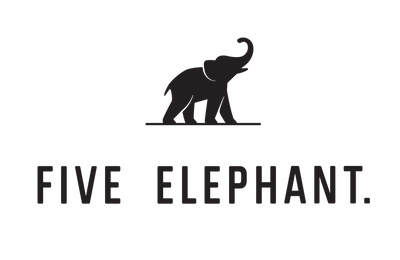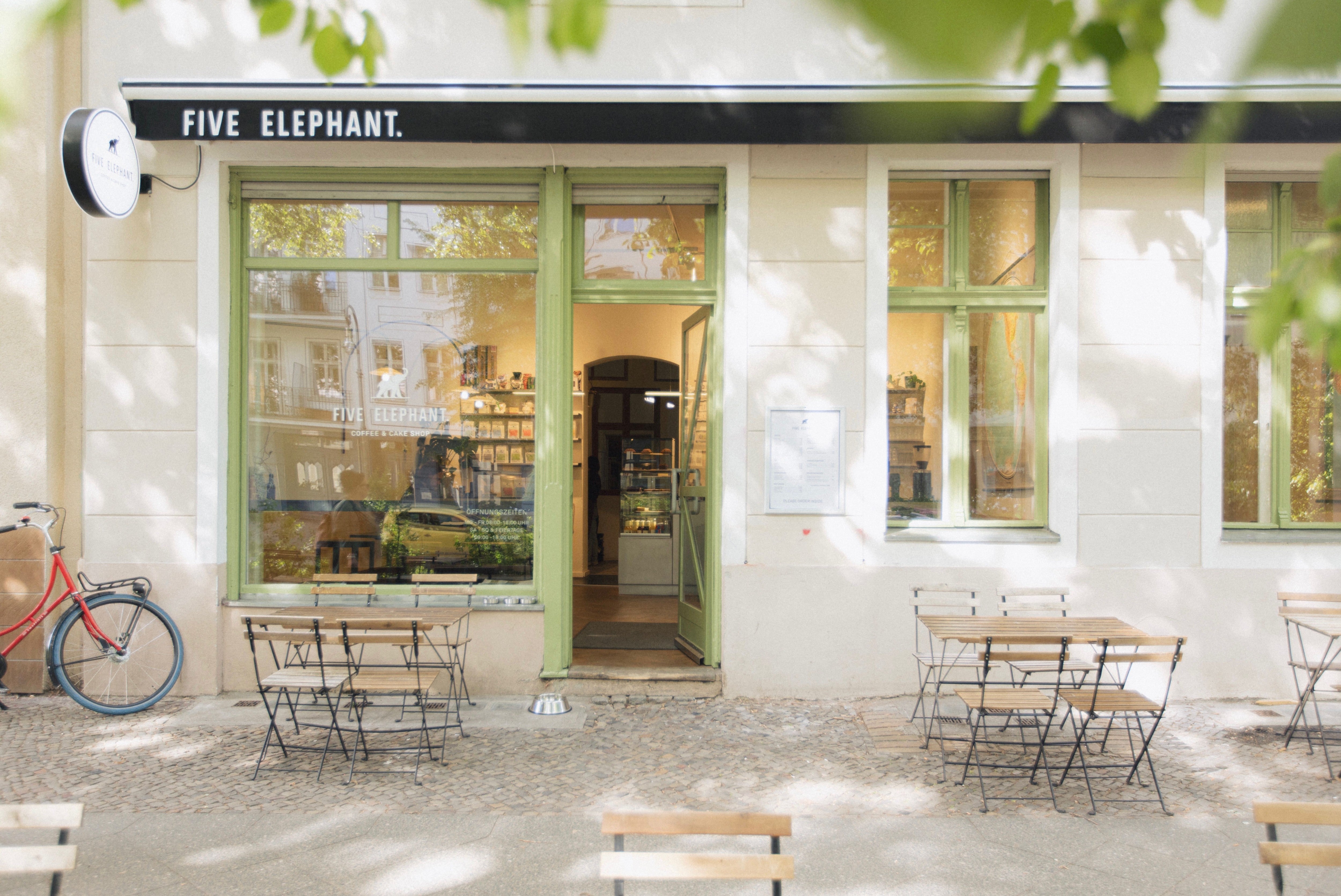In December 2010, on a quiet, dead-end street in Kreuzberg, we opened the doors to our first café. Berlin’s specialty coffee scene was still forming. Words like direct trade, transparency, and terroir hadn’t yet entered common use. But from day one, they were the foundation of our work.
We roasted our own coffee in the back, baked our cakes from scratch, and built everything ourselves, including a handmade drip bar using Hario V60s and welded copper pipes. It was honest, simple, and hands-on. Filter coffee wasn’t just a nod to nostalgia, it was how we chose to highlight origin, process, and varietal. For us, it was the most compelling way to share what coffee could be.
Sophie and I ran the café ourselves. We opened the door, brewed the coffee, and served the guests. There was no grand plan. Just a belief in flavor, quality, and the quiet possibility of something meaningful.

A Neighborhood, and a Community
That early winter was harsh; fifteen to twenty centimeters of ice covered the streets for weeks. At the end of our first week open, I left Berlin briefly to visit an old family friend in the Netherlands with my father. Sophie was alone, holding the café together in that bitter cold. One day, she turned around and saw a man sitting silently in the café, rubbing his legs the way he still does. She hadn’t heard him come in. That man was Mario.
Mario came from Argentina, a former student advocate with his hard history. He told us that in Berlin, unlike elsewhere, the police didn’t interfere with him, and that’s why he stayed. He lived just down the street in the social housing complex. Slowly, he became part of the rhythm of our space. He started helping with chairs, showing up early, and becoming one of the most familiar faces in the café. Over the years, he’s been in staff videos, invited to every team party, and welcomed in like family. Though his injured leg now keeps him from carrying chairs, he still shows up most days, sometimes in the office, sometimes just around. And always welcome.
This café was never just about coffee. It was, and still is, a part of Kreuzberg. Edgar and his team now run Bagel Bro on the corner, which began as Fed Deli. Atelier Dough turns out beautiful donuts nearby. Down the street, Mariama still runs Senegambia Restaurant, the same place Sophie and I went for nourishment in the earliest, most exhausted days of our renovation. Fifteen years later, she’s still cooking, and we’re still returning.

The Renovation: A Chance to Rebuild With Purpose
Earlier this year, we faced a hard truth: a long-standing leak had damaged the floor beneath our bar. After nearly a year of temporary fixes, we knew we had to pull everything up. But rather than just repair, we chose to rebuild - with intention.
This renovation became an opportunity to return to the heart of what made our Kreuzberg café special. We opened up the space by reclaiming a staff room with natural light, transforming it into part of the guest area. The layout was redesigned for both a better workflow and a more welcoming guest experience.
At the center of the renovation was a renewed focus on filter coffee. We built a dedicated corner for hand brews, bringing back the very thing we launched with in 2010: space to pause, engage, and talk about coffee. It’s still the clearest way for us to share the nuances of varietal, terroir, and processing, and we’re proud to make it a more visible part of the guest experience again.
And the cheesecake, our original, iconic recipe, remains. In 2011, my mother emailed Sophie the recipe, joking that it would be a hit. She wasn’t wrong. That cheesecake became the soul of the café, and still sits at its center today.
Design As Experience
This project wasn’t about aesthetic flourishes, it was about clarity and light. We worked with our longtime collaborators at Sun Studio to develop a design that is practical, refined, and atmospheric. Sebastian and Tobias Amberger, Anna Kruglova, and Lukas Dietrich shaped a space that honors both craft and calm.
The build was carried out by Joe, Taylor, and Pete from MADE, who have worked with us since our Mitte bar and beyond. They custom-built the aluminum bar, a clean and striking centerpiece, topped with a slab of granite we sourced from Steinsite in Neukölln. We spent hours sorting through stone until we found one with the right depth and quiet strength, a piece from Zimbabwe that anchors the space with dignity.
Lighting played a defining role. We installed track lighting to open up the entire café, creating warmth without glare. And we brought back the hanging lamps from Serax, first used in our now-closed KaDeWe café. Their soft presence gave us a sense of continuity, reminders of earlier chapters, now brought forward into this one.
We also kept the world maps - a subtle nod to our original inspiration. Pulled from 1960s schoolroom aesthetics, these maps act as a quiet conversation piece, tying geography, time, and origin into the very walls.
 Looking Forward
Looking Forward
We’ve always believed that design isn’t about decoration, it’s about focus. This new space lets in more light, more air, and more time. It’s a place where people can slow down and where we can once again highlight the things that matter most to us: origin, taste, and connection.
We’re deeply grateful to everyone who made it possible - from Tom Freund, our general manager, who carried this project forward with endless care and determination, to our neighborhood and the people who’ve supported us for fifteen years.
Five stops from the U-Bahn, tucked into a quiet side street, the Kreuzberg café isn’t a place you stumble upon. It’s a place you choose to visit. And now, more than ever, it’s ready to welcome you in.


Leave a comment